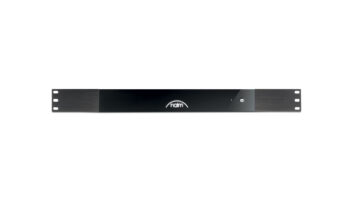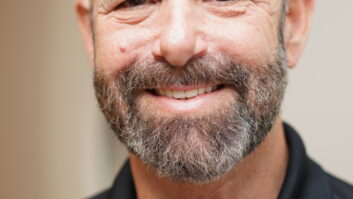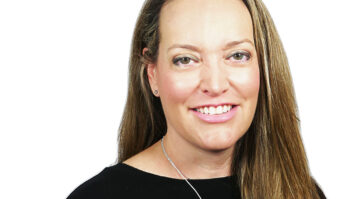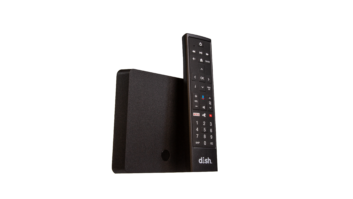During International CES last month, Dish Network made headlines with news of its first 4K Ultra HD programming plans and an “over-the-top” (OTT) streaming service targeting so-called cord cutters. But somewhat under the radar, former custom integrator Frank DeFilippis continued his mission of guiding the satellite TV provider toward a more streamlined and profitable installation program for the custom integration channel.

Frank DeFilippis, product lead for channel programs at DISH and Vivek Khemka, Deish senior VP of product management, during CEDIA EXPO 2014.
Dish’s new channel programs director is looking to assist integrators nationally with a CEDIA-specific set of resources, including deeper integration and field activation support to further enhance the customer experience and profitability for the channel.
As a custom integrator in Atlanta, DeFilippis was perpetually frustrated by his company’s lack of profitability from working with pay TV services on behalf of clients.
Pay TV providers are great companies who make excellent products, but they have failed the CI channel,” DeFilippis stated bluntly.
DeFilippis said that most of his CI clients didn’t want to “cut the cord,” and the majority not only required conventional pay TV but also whole-house functionality and full integration. Through the years, he tried every pay TV option–satellite, cable, CableCARD systems, Media Center, and new offerings from phone companies. None, he said, offered the profit opportunity of other integrated sub-systems. After years of frustration and many calls and meetings with providers, he decided to get more directly involved and attempt to solve the problem.
DeFilippis developed a direct relationship with DISH and essentially created a job for himself at company’s Englewood, Colorado, headquarters last year. His eloquently expressed frustration with pay TV’s traditional relationship with the CI channel has thus far been met with promises of support from decision makers within DISH.
As he rolls out a program, there are two basic problems that DeFilippis hopes to correct: poor whole-house systems integration with set-top boxes (STBs) and a weak business model for CIs working with DISH.
DeFilippis noted that pay TV companies have historically supplied OEM STB equipment that is unpredictable and inconsistent from one job to the next. “This almost eliminates the chances for an RS-232 or IP driver, so CIs are left with infrared for control integration,” he explained. “IR is fine, yet many STBs utilize toggle bit power commands, which inevitably leads to out of sync AV setups, service requests, and credibility erosion for the CI and the entire channel. Some CableCARD-based DVRs and DirecTV support better integration, but still have business model issues for installers.”
DeFilippis also noted that although successful CIs understand the value in selling custom, lifestyle-enhancing solutions to clients, rather than just a list of equipment and a labor force, that reputation is compromised with clients dealing with pay TV service start-up and maintenance.
“Accountability and usability for complex systems is really what [CIs] offer, so where’s the value-add when we ask our customer to call the cable company to order CableCARDS needed for integrated DVRs?” he asked. “Imagine the anxiety when the customer gets asked if they want single or multi-stream cards and don’t know how to answer? Then we ask the client to schedule a cable tech to meet us at the house, so we can camp out for four hours and hope they show up.”
DeFilippis believes that those are logistics and details that the CI should absorb without involving the customer. Then, despite being accountable for the performance of the integration, the CI makes $0 for the activation and supervision of the install.
“CIs use their influence and sometimes suggest satellite TV,” he said. “Now the CI can integrate with predictable hardware, control the install schedule, and get paid for the activation.”
All is good, except that CIs typically aren’t viewed as good accounts by satellite TV sales teams despite the high quality of clients. This translates into little attention from sales reps and support resources and ultimately termination letters due to low activation volume.
Most immediately DeFilippis is looking to end the practice of terminating lower volume CIs from the Dish system. Simultaneously, he is working with all major CI control systems companies to develop two-way drivers, which will eliminate the need for IR emitters allow program guide metadata to show up on a control app. Other CI program plans also are underway, including a beta test program with integrators in Florida in February 2015.
Custom integrators can sign up for updates to this program at www.dish.com/cedia.







